Tim Eichwald, Interdisciplinary Sculpture, 2023
Gum E. Coli
The goal of this project was to recreate the appearance of a traditional “gummy worm” using lab materials. The material used here were agar agar, xanthan gum, and E. Coli that has been modified to produce a variety of fluorescent proteins. The agar was cast in a silicon candy mold and later inoculated with bacteria. Photographs were taken at various stages of growth, as well as under UV light.
Load your project overview images in the gallery below. The exact number of images is flexible, but 3-6 images is usually good for this.
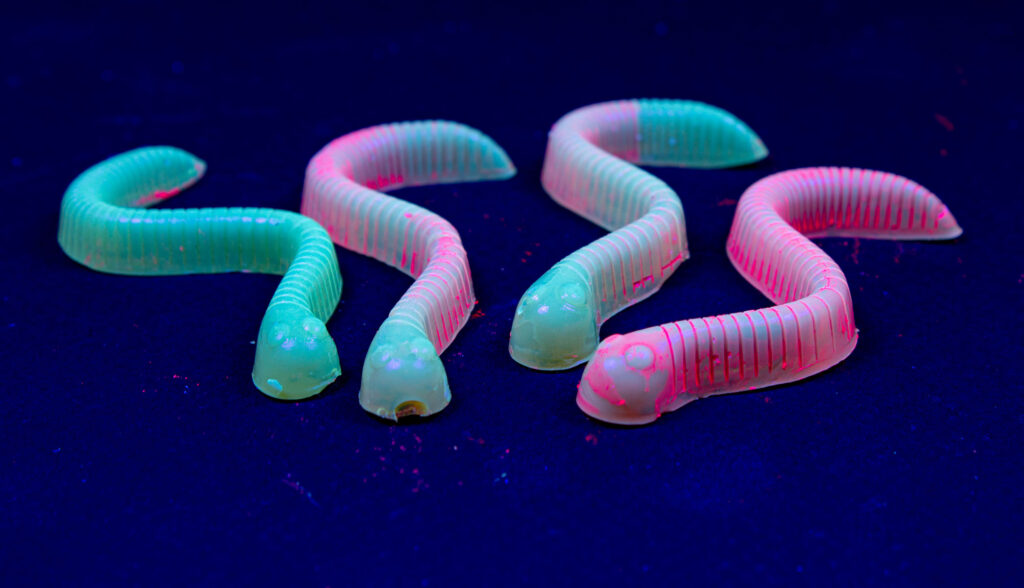
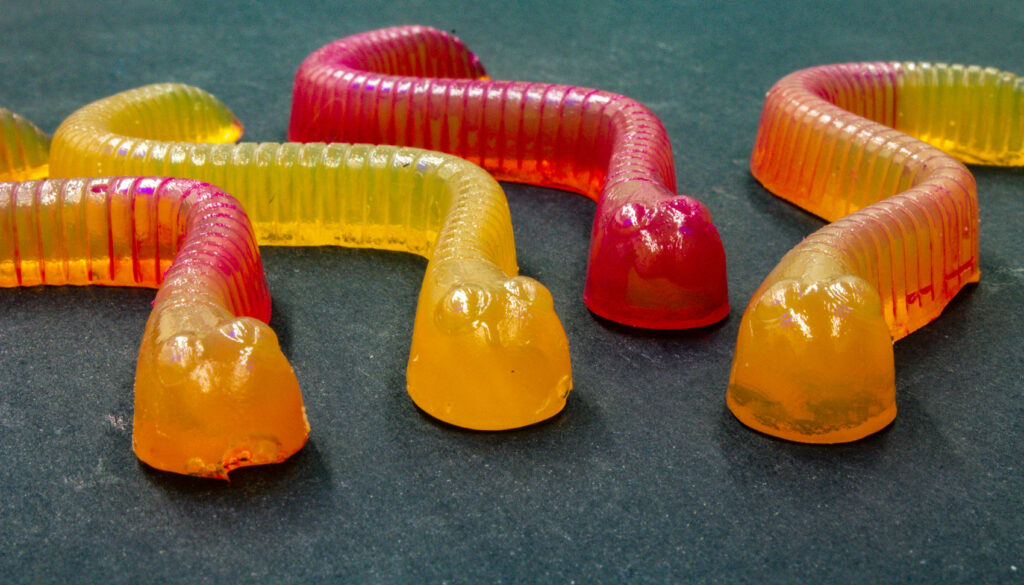
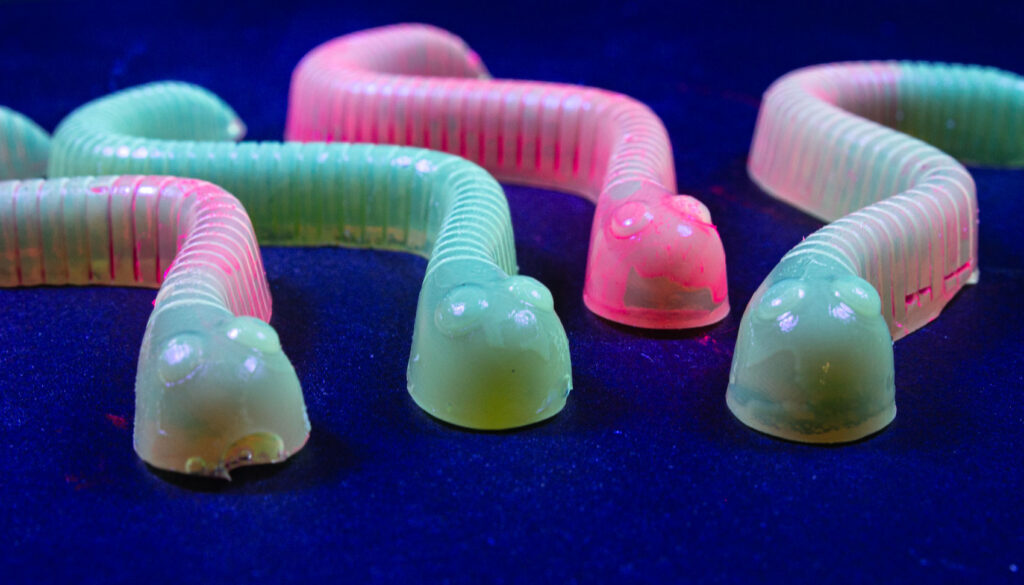
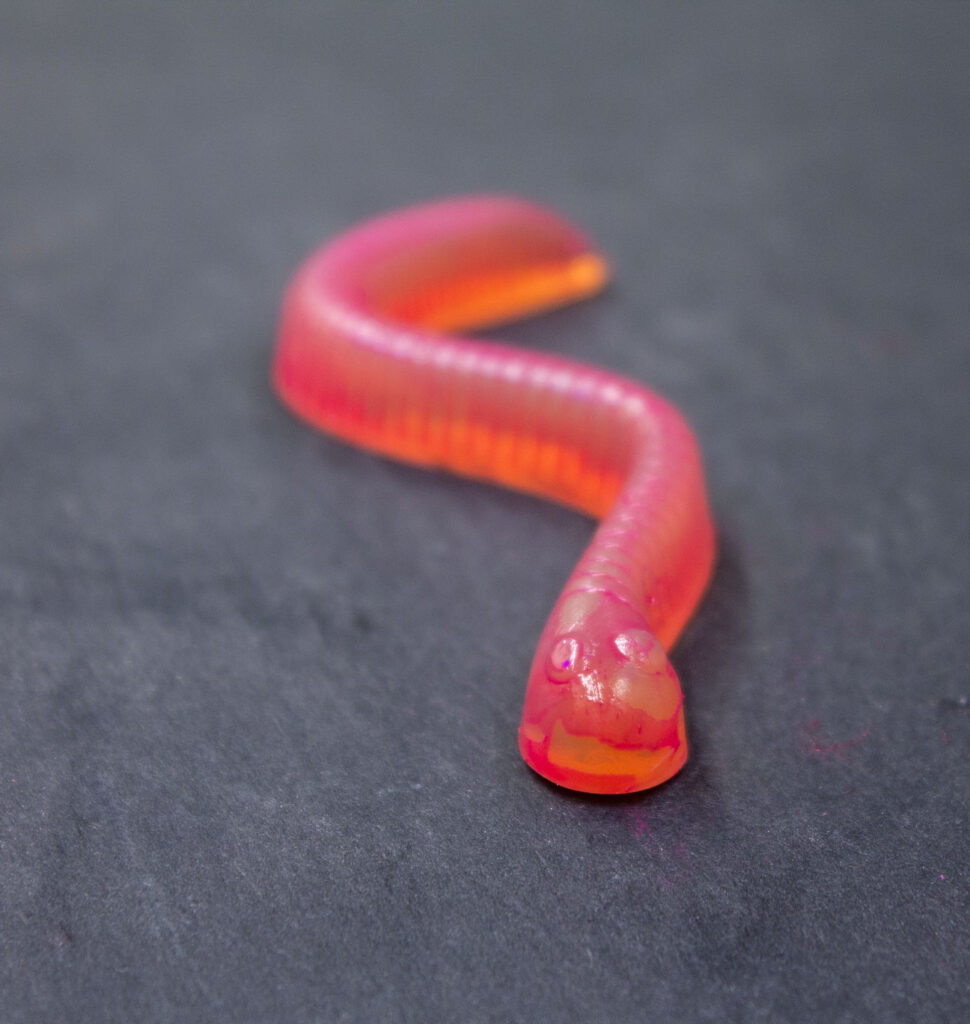
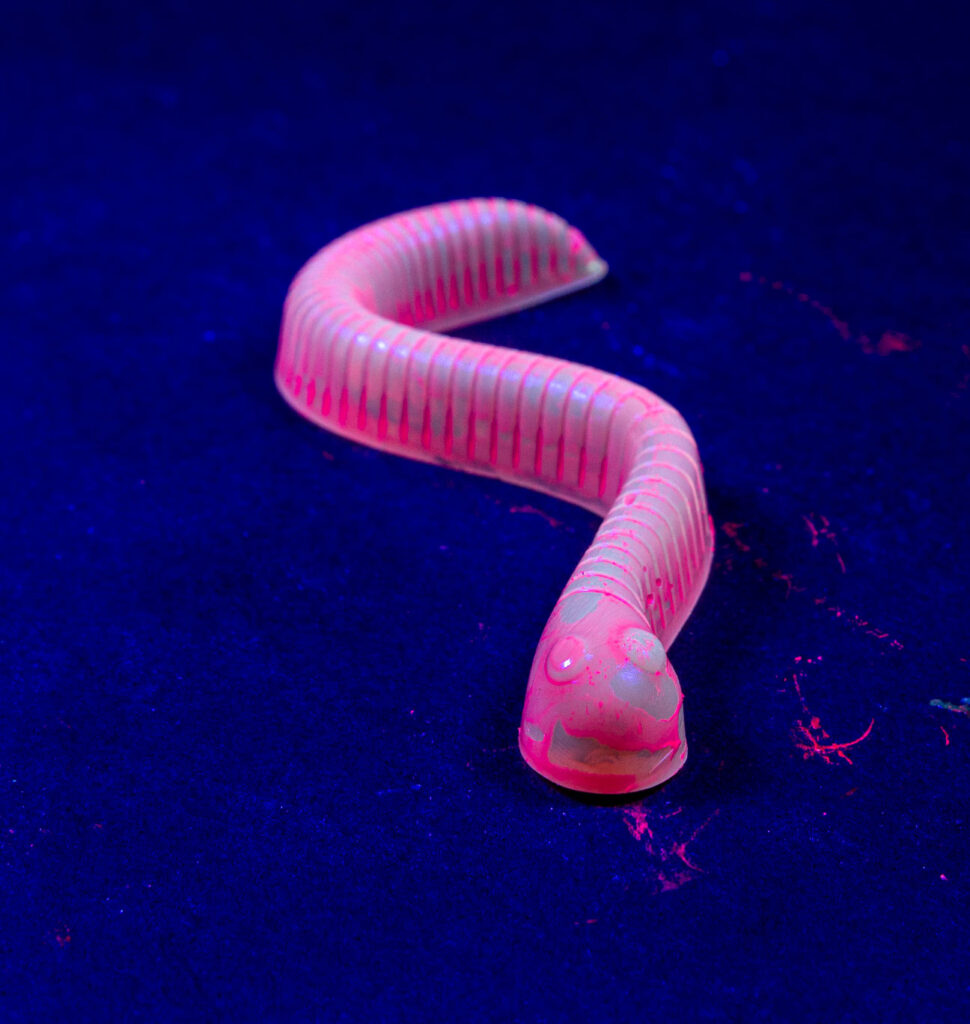
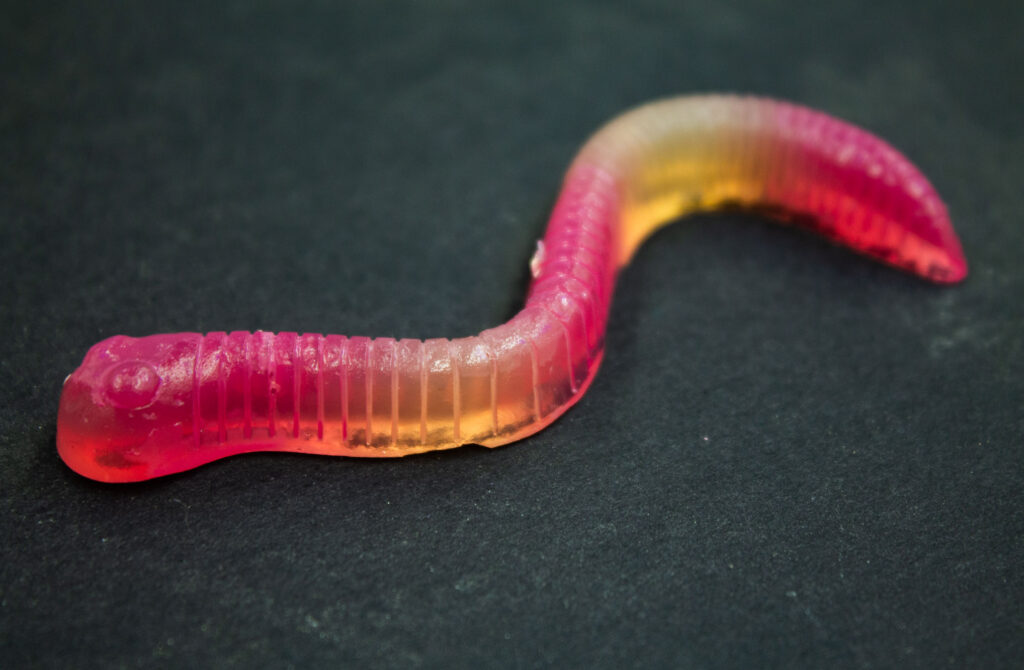
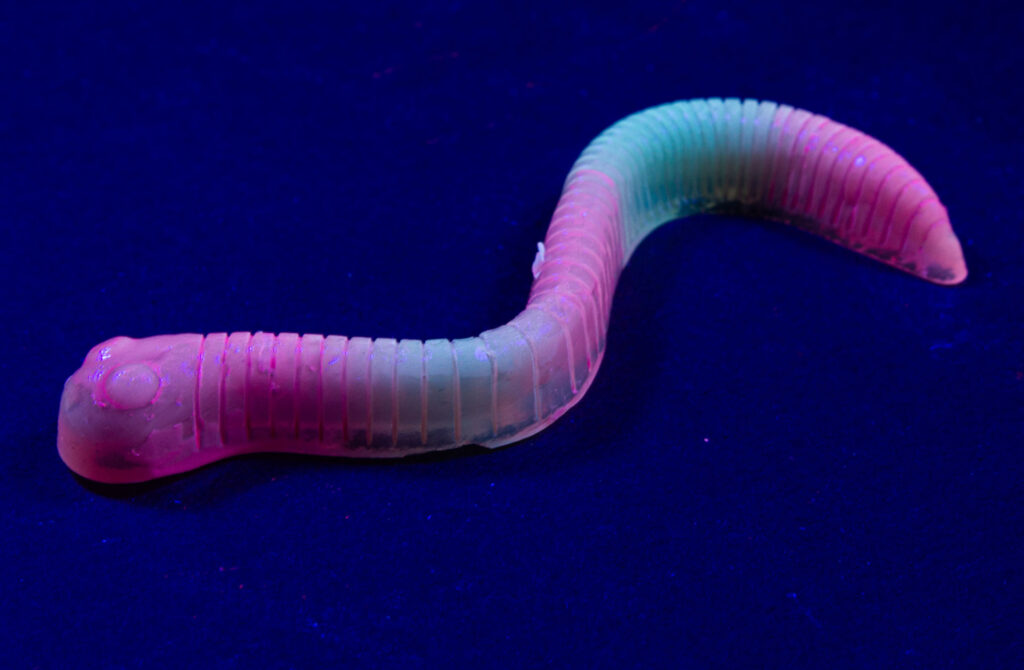
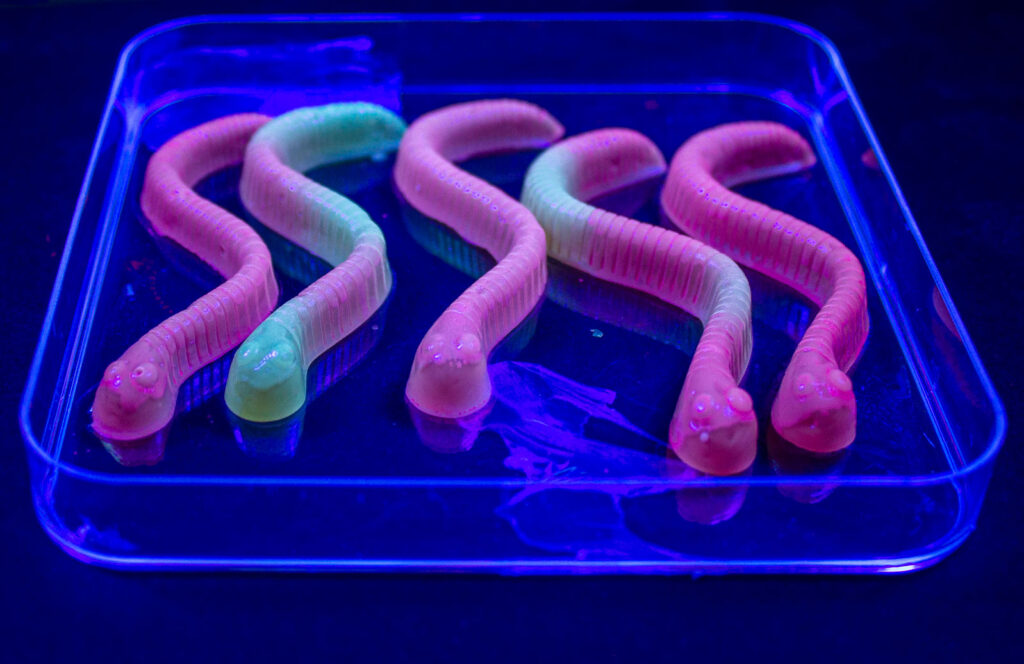
Process
Agar agar is not an incredibly flexible material, but this isn’t typically an issue as it’s generally poured into flat containers in which it remains until it’s disposed of. My attempts to create three-dimensional shapes by pouring agar into, and subsequently removing it from, a silicon candy mold presented some challenges. The first series of worms were cast with agar that was created per the manufacturer’s instructions. These worms were far too brittle and none of them survived the de-molding process intact. Several more attempts were made with a variety of modifications, but two were equally more successful than the rest. The addition of xanthan gum, as well as simply increasing the amount of agar used by fifty percent, resulted in relatively flexible worms that exited the mold with few issues.
A variety of methods were also used in the culturing and application of the E. Coli. Regarding application, a brush was used to both flick and paint the bacteria-laden culture on the worms, and in later tests a pipette was used as well. Dipping the brush in the culture and introducing to the worms using a dabbing motion yielded the best results. Some of the worms were inoculated with a concentrated culture produced by growing a large volume (2L) of E. Coli, and later spinning the cells down in a centrifuge.
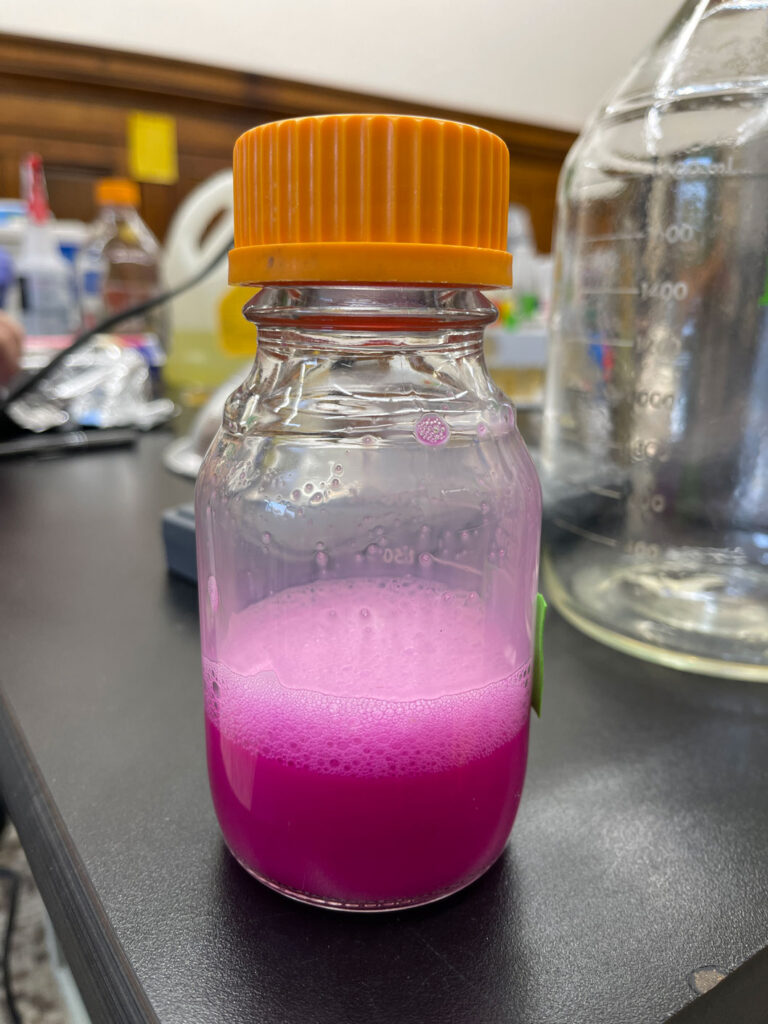
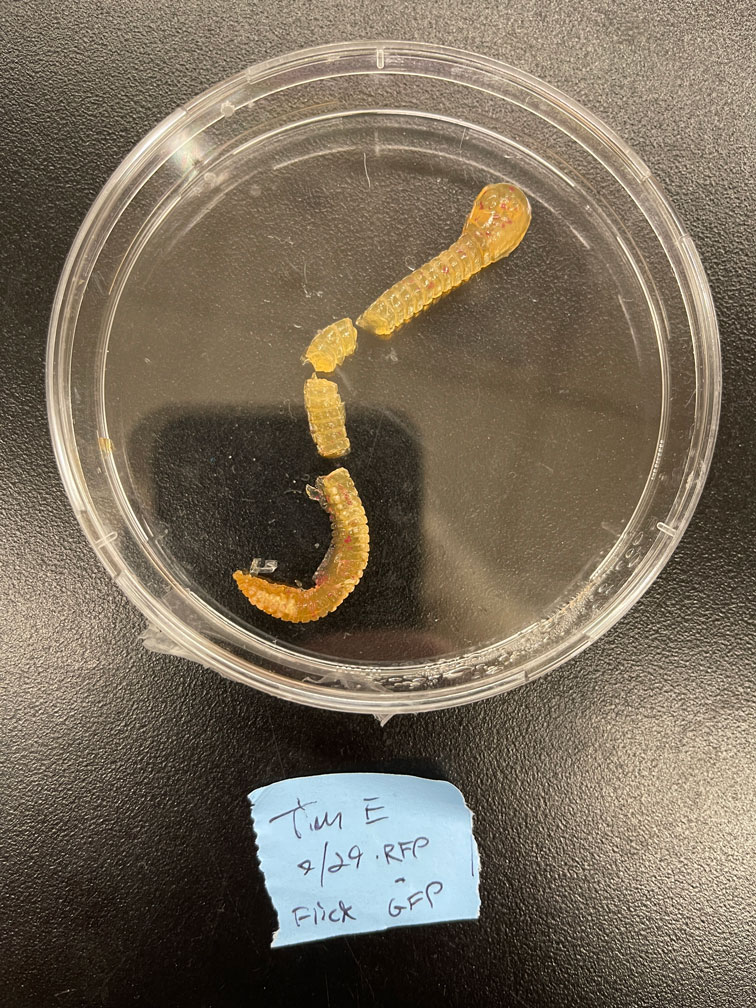
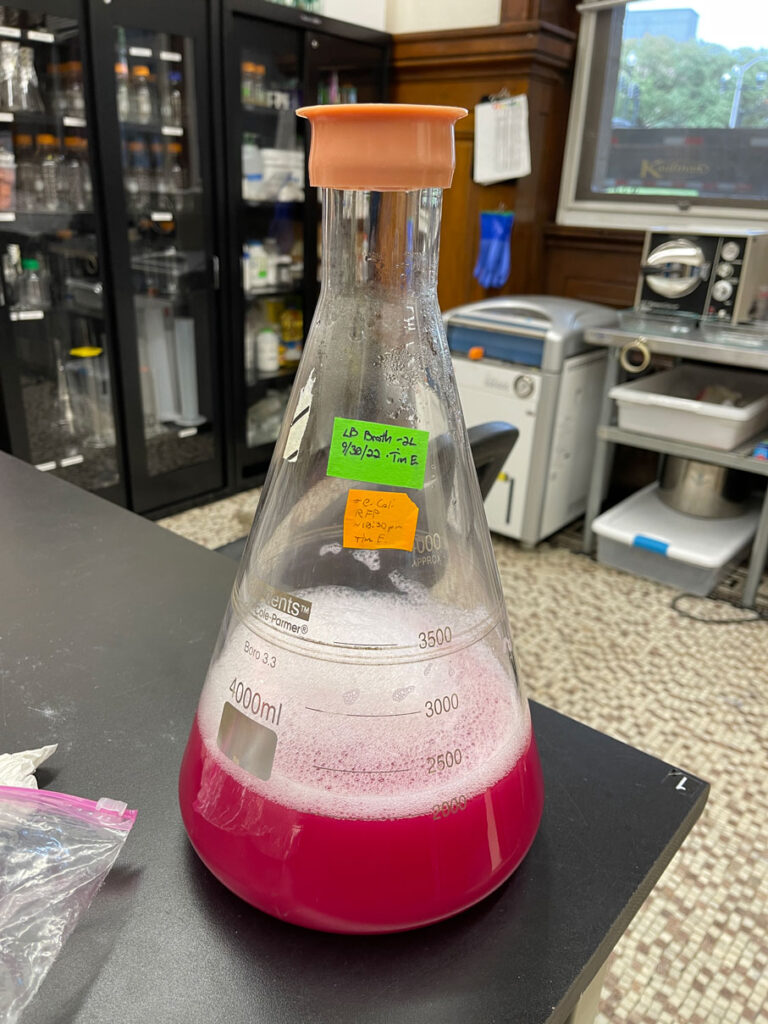
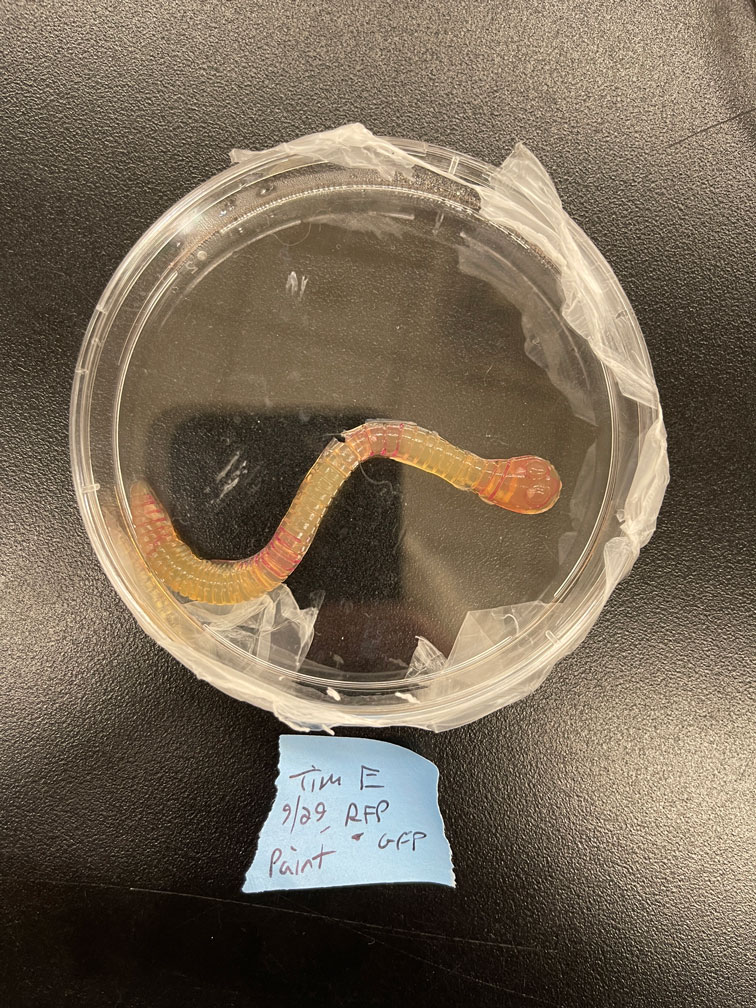
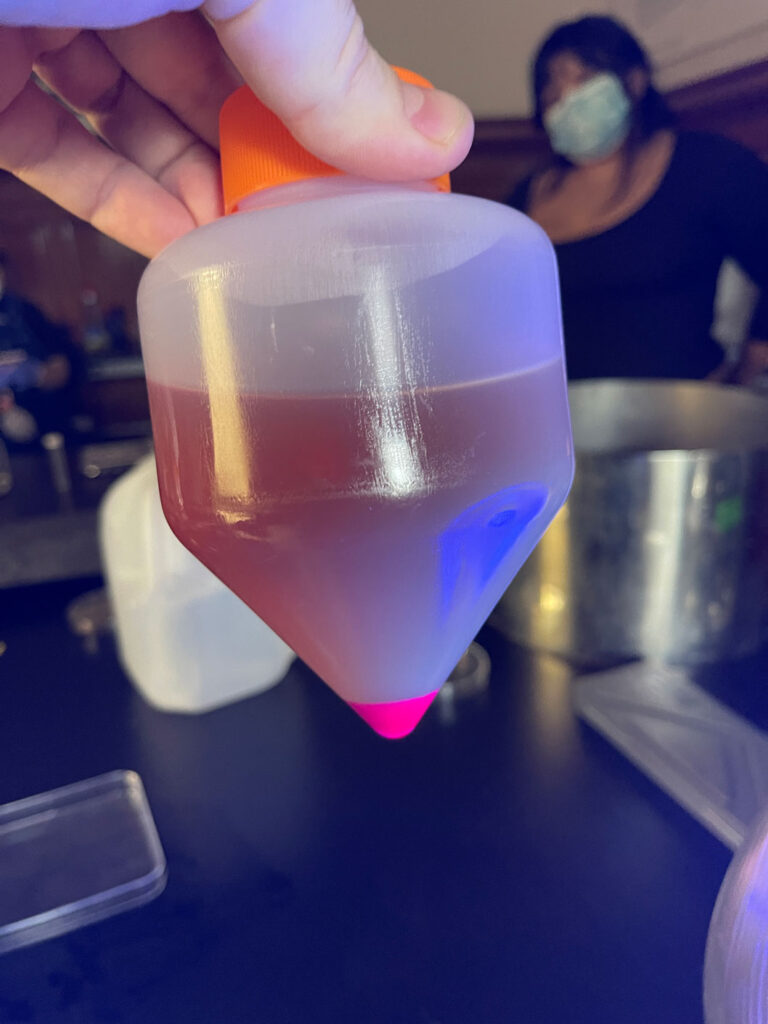
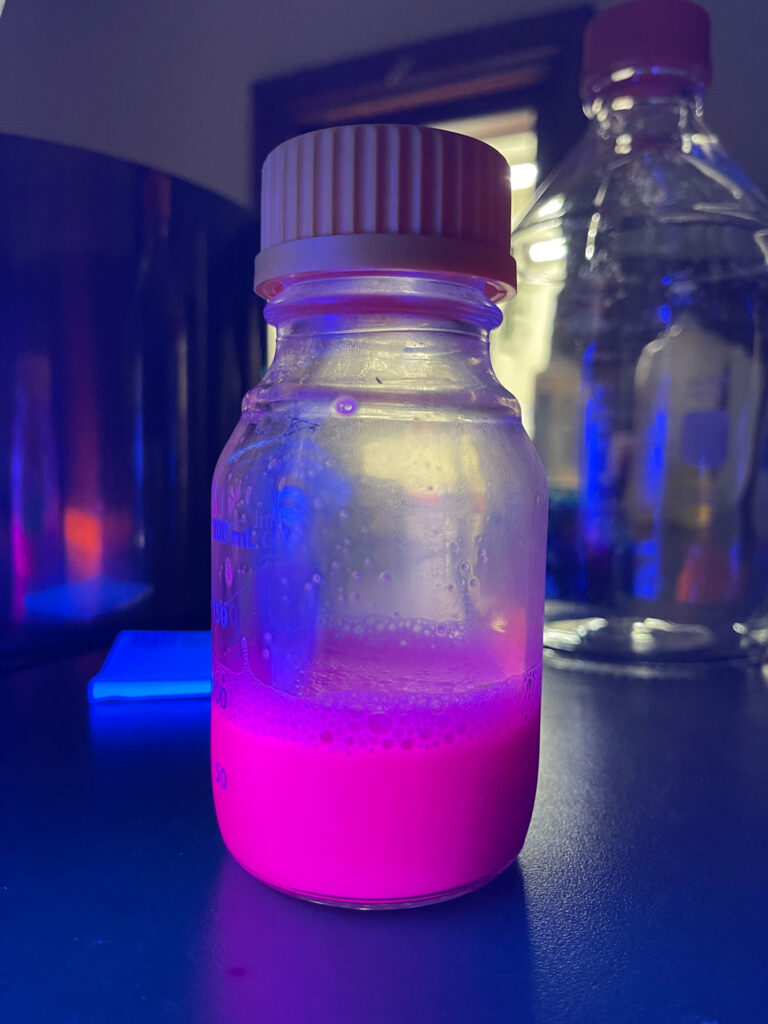
Learn More
…